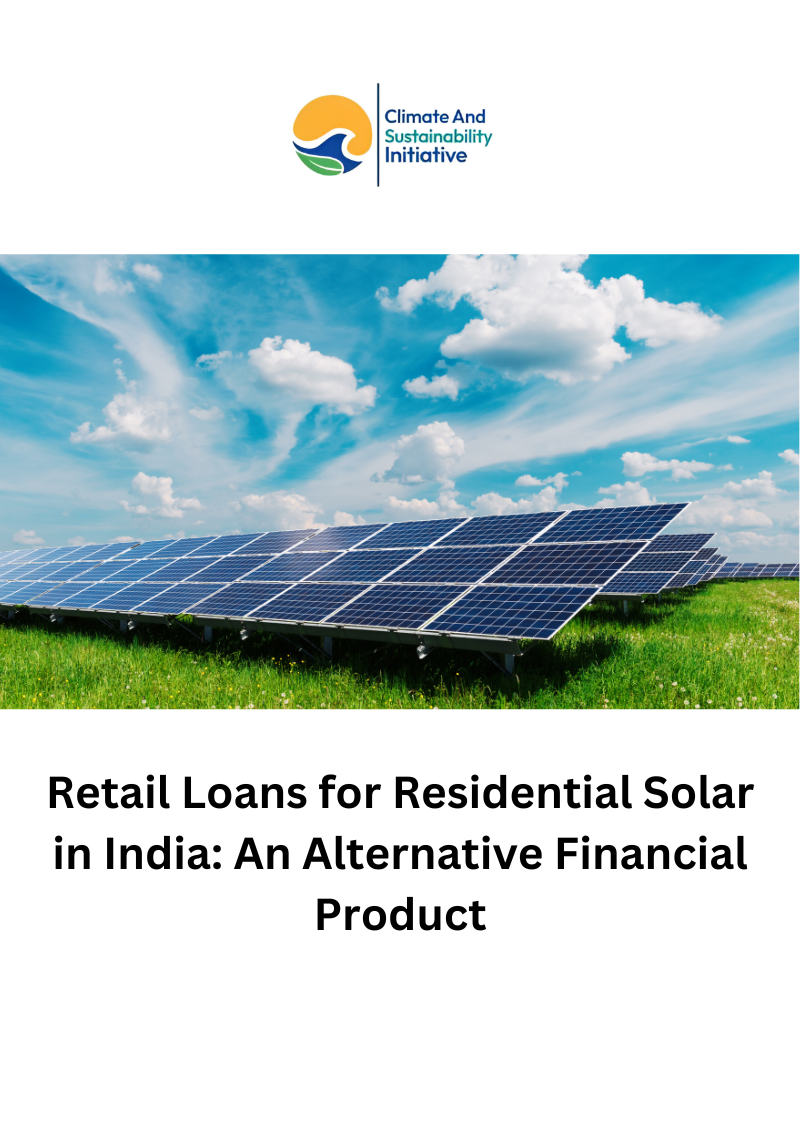Retail Loans for Residential Solar in India: An Alternative Financial Product
Labanya Prakash Jena and Vaibhav Pratap Singh

Overview
The Government of India (GoI) had a target to add a cumulative rooftop solar capacity of 40 GW by 2022 as part of the country’s Intended Nationally Determined Contributions (INDC). However, installations only made up about 30% of the target, even after the intended timeline. Within the rooftop solar sector, the household segment holds promise. However, it cannot realize its potential due to economic, regulatory, and structural reasons, including a lack of access to debt financing for households, which hinders progress. Existing solar debt financing products face challenges such as having limited financial performance records and requiring excessive collateral. Addressing these barriers is crucial for the residential rooftop sector’s growth. The proposed resolution involves a retail loan product that employs the subsidy allocated to the residential sector to guarantee the solar system loan. This loan product will address access to finance issues in the residential rooftop solar sector using the capital expenditure (CAPEX) model. Banks and Financial Institutions (FIs) will be more comfortable lending to household consumers as there is a guarantee (30% of asset value). Since the subsidy is given back to the customer after the full loan payment, the customers have a greater incentive to repay the loan. Besides, this solution will also help address the lengthy subsidy disbursal issue. The loan product presents a pioneering approach to tackling the financing obstacles in the residential rooftop solar market. It not only aims to offer crucial debt financing but also showcases the commercial feasibility of the residential rooftop sector. By aligning the financial solution with the customers’ requirements through favorable credit terms, this financing option encourages residential customers to transition to rooftop solar systems.
